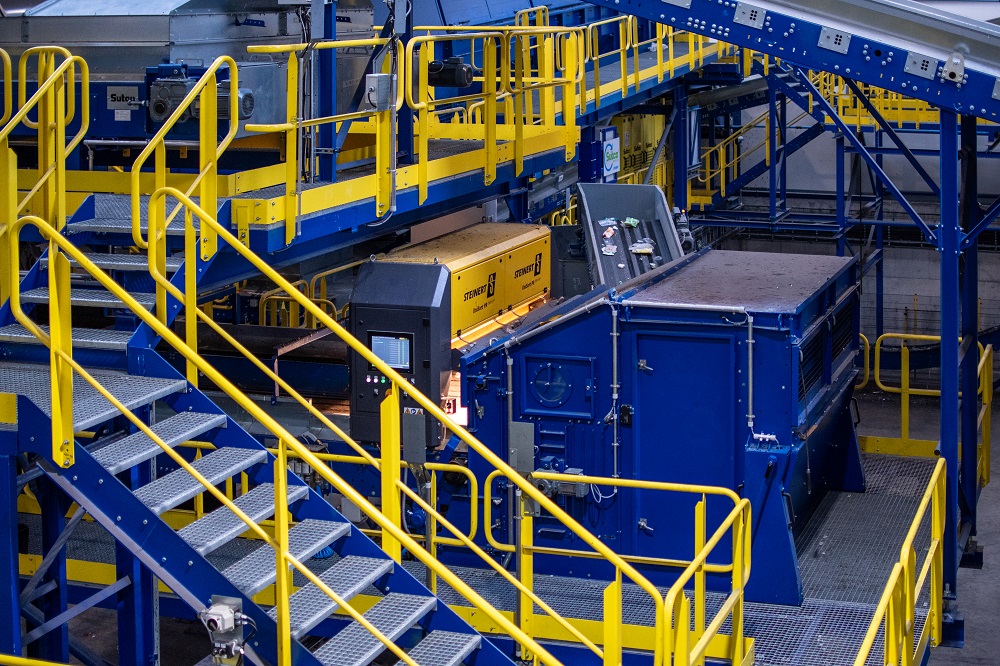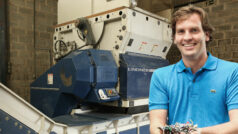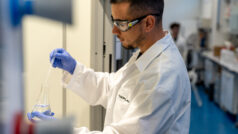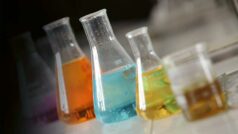
Lipor processes around 500,000 tons of waste annually with a clear objective – to recycle as much as possible and to protect the environment. In addition to simply recycling waste, the company also utilises comprehensive education and information programmes to boost the public’s environmental awareness.
The old days in the “Lipor 1” facility are a thing of the past – and for good reason. Since 2019, Lipor has been working on modernising its sorting facilities – an ambitious project aiming to increase capacities and digitalise the entire process. “We had always wanted to bring this technology here,” says Helder Filipe, Head of Operations and Logistics, who is responsible for developing the site. The decision to go with the state-of-the-art solutions from Steinert was made as the result of extensive research and tests. “We met at a trade fair and arranged a test date right away to see how the machines sort our materials,” continues Filipe.
The facility has now been equipped with seven UniSort near-infrared (NIR) sorting systems, two Steinert UME overhead suspension magnets and one Steinert CanMaster eddy current separator. This upgrade in technology has revolutionised the company’s working processes. Instead of manually sorting 12,000 to 13,000 tons of waste annually, the facility now processes it two to three times faster at 8 tons per hour – and it does so with a significantly reduced workforce of 12 to 14 employees.
The switch to automated processes, however, was not without its challenges. “Of course, there was opposition at the beginning as well as questions about possible job losses,” Filipe openly admits. However, Lipor found a solution, as the employees have been retrained and many of them have been able to take on other tasks within the company. For Filipe and his colleagues, this means one thing above all else – security. “We are still able to continue working in this field, but with machines handling the majority of the work,” he explains.
A further benefit of the new facility is the improved material separation. 20 to 25 percent of the materials put in recycling bins in Portugal still cannot be recycled or are contaminated. Thanks to the new sorting systems, Lipor is able to better utilise these materials, which has resulted in a significant reduction in the amount of waste in a number of sorting fractions such as PET, PP and PE in 3D and 2D as well as TetraPak, cans, iron and paper.
Among other things, this is the result of using the Steinert NIR sorting systems UniSort PR EVO 5.0 and UniSort Film EVO 5.0, which can distinguish between a wide variety of materials based on their chemical composition and colour by means of a combination of sensors, including a high-resolution colour camera and a hyperspectral imaging (HSI) sensor. These systems are also ideal for sorting, thanks to sorting programs based on artificial intelligence. UniSort Film also offers an air technology specially developed for sorting 2D materials such as film and paper. This technology can separate materials which tend to fly around at extremely high levels of purity despite high belt speeds. State-of-the-art magnet separation technology also has a role to play in separating metals, as the overhead suspension magnet Steinert UME removes all ferrous metals and Steinert CanMaster is optimised for separating non-ferrous metals such as aluminium cans.
The facility can also flexibly adapt the machines to new requirements and material properties. New packaging formats and materials are constantly appearing on the market, making this adaptability indispensable for ensuring the efficiency and quality of the sorting facilities. The separation of thermoformed PET, which has been prescribed by law since the start of the year, poses a particular challenge. Nevertheless, Filipe remains optimistic: “We are continuously collaborating with STEINERT to improve our situation,” he states. “AI and data analysis will play a big role in this. When it comes to our investment in this facility, we can’t afford for the material to call the shots – we have got to be in the driving seat. To ensure that we are less dependent, we have to be able to detect and understand the material so that we can modify the process.”








